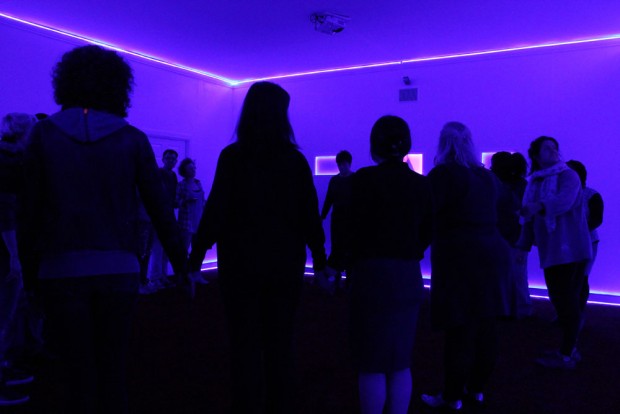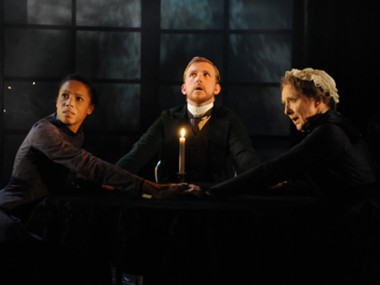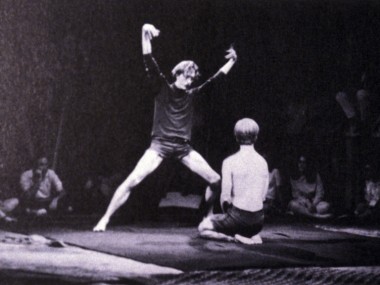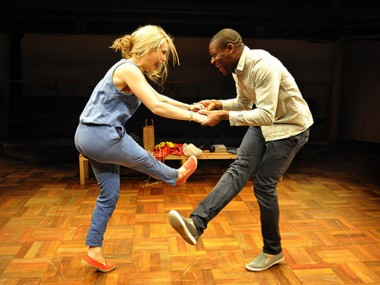Invisible Treasure, Oval House Theatre
Thursday 5th November 2015

Theatre should be an adventure. At least some of the time. But often it isn’t. So much of the time it’s rather predictable and, dare I say, a bit boring. After going to the theatre for many years, the whole experience is so well known that every cell in your body moves through the street, into foyer and then into your seat without half your senses being aware of the process. So it’s great that with their latest show, Invisible Treasure, theatre-makers fanSHEN join a cohort of groups whose aim is to shake up audience expectations.
Billed as “an interactive digital playspace, an electrifying exploration of human relationships, power structures and individual agency, where your actions can change everything”, the event involves a complete subversion of normal theatre. Yes, there are no actors, no plot and no dialogue. Instead there is a room, and a small audience of some 20 people, who respond to various stimuli and to each other. At first, it feels strange, almost tense, to troop along a corridor with a group of strangers. But, once in the location, the human desire to cooperate and solve problems together quickly takes over.
The room — designed by Cécile Trémolières — is white, with a fluffy orange carpet punctuated by several blue discs and a series of small gauze-covered windows. In one corner there’s a giant pink softy rabbit. Music begins to play, and a series of instructions appear on a small screen. Very rapidly, you realise that this is a bit like a computer game in which you have to solve a situation in order to move up a level. Solutions range from moving around the space, creating shapes with your body, calling out, shouting or — in one lovely moment — howling like a wolf. There is a section of the show where the audience dances; there is a moment when they really need to rebel. And individuals are free to participate, or not. To stand, to walk around, or to lie on the floor and stare at the ceiling.
I had a really good experience with this show, mainly because the other audience members were great. No one insisted on bossing anyone around; everyone contributed ideas. When we got stuck everyone felt low; when we jumped a level, everyone felt good. The little room got hot, especially after the dancing, but the ideas kept coming. Not only was the message that collaboration works wonders clearly understood, but some darker thoughts also arose: could this be made into a prison guard experiment? What happens when the group divides into leaders and led? Where the theatre makers spying on us, and grinning? But the best bits reminded me of the joy of taking drugs and the spacey and psychedelic quality of the experience, which last about an hour, stayed with me much longer.
But although I personally had a good time, I did wonder if the show went far enough in its own terms. Some moments could have been made clearer, and the issues at stake maybe defined a bit more. But, of course, because the audience literally is the show, every group will have a different experience, and within each group every individual will handle the experience in a different way. I like the idea that this is a show in progress and that it has already changed a lot in its first week. And I love the notion that the invisible treasure of the title is us. Or, rather, the best part of ourselves. The creators of the experience, Dan Barnard and Rachel Briscoe, use some really impressive sensor, sound and projection technologies, and given that fanSHEN’s mission is to “transform the world into something to be experienced, rather than something which is consumed”, I’d say this was one successful episode in that lifelong quest.
© Aleks Sierz




